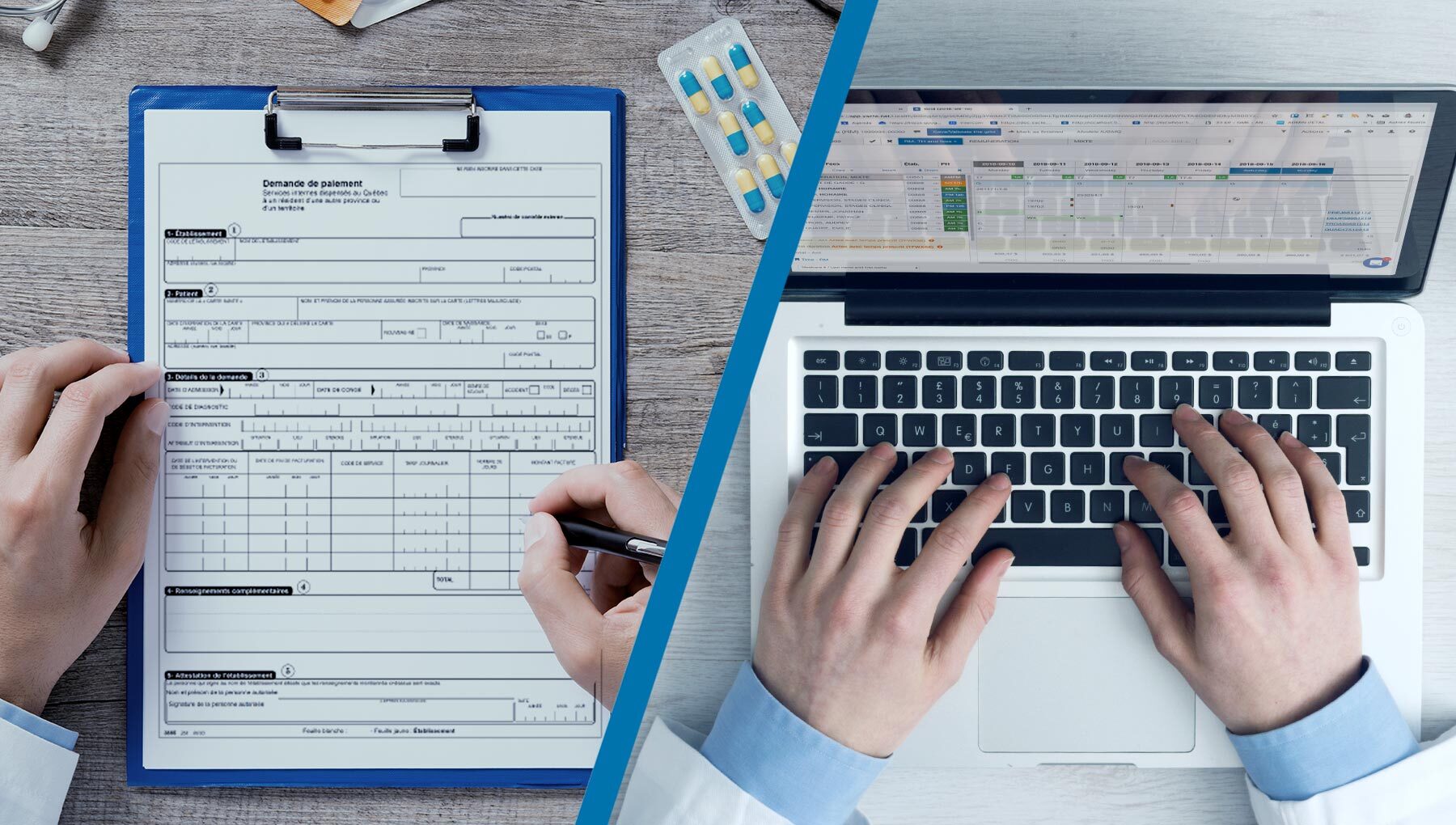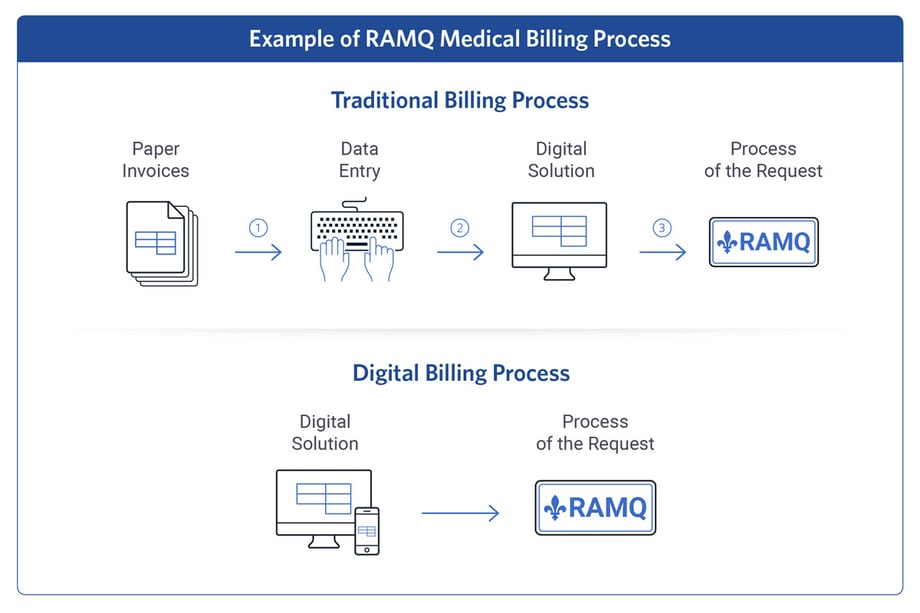
We estimate that more than 50% of Quebec’s physicians still record their acts on paper before physically transmitting them to their billing agency, not surprising since this method was the preferred one for a number of years. However, software is gaining ground fast, especially as it can allow physicians to quickly enter their requests directly into a digital solution which can gather and validate this data instantly.
Although functionalities differ from one billing system to another, there are 3 major differences that distinguish digital from paper (traditional) medical billing.
1. Data Entry and Sending for Payment Requests
If you decide to work with a conventional billing agency, you will have to enter your acts manually, on paper (castonguettes), then transmit these documents physically to your billing agency. The person responsible for your account will then have to transcribe this information manually into a billing software and submit everything to the RAMQ. This additional step adds delay, as well as being an administrative burden to the already complex billing process. Also this can result in transcription errors.
With digital billing, you no longer need to produce paper billing, and then transcribe everything into a computing solution. The requested submission is indeed done only once, directly into the software.

"The more doctors use digital solutions to manage their medical billing, the less they will be faced with data-input errors that generate back and forth exchanges with the RAMQ. This new way of billing translates into time savings for physicians, the billing agency staff and the RAMQ. Everybody wins!" explains our CEO, Patrice Gilbert.
Obviously, the less transcription there is, the more we prevent errors. Digital solutions in medical billing thus allow for better accuracy with regards to the billing requests that are sent to the RAMQ, in addition to the time they gain.
It is also important to mention that paper billing involves the added risk of lost or misplaced confidential paper documents, which is not the case with digital billing.
2. Validation and Storage of Data
Another big difference between the traditional and digital billing methods is the automatic validation of the data entered, which eliminates errors. Some medical billing software use intelligent functionalities to identify errors in real time. You then expunge payment refusals and lessen the time you spend correcting invoices.
For example, the Xacte solution analyzes and identifies several errors as you enter data, whether it is related to the validation of NAMs, codes that are wrong, missing, or ineligible because of delays, diagnostics that are ineligible for an increase, context elements, etc. Therefore, more than 99% of payment requests sent via the Xacte solution meet the RAMQ’s standards.
Moreover, the RAMQ billing software displays visual cues which suggest possible alternatives. For example, for certain disciplines and when validation is activated, if you enter a visit in Xacte and the delay to bill a more beneficial visit is passed, the software will let you know. The choice is up to the physician; the visit needs to match the definition and the notes of the file need to reflect that. On the other hand, if you bill a visit within the delay, the software will display an error and will specify the rule that hasn’t been followed.
See also: Choosing your RAMQ Medical Billing Software? 6 Questions to Ask
Some billing software, like Xacte, allow for saving and archiving payment requests and fiscal documents in a secured, cloud-based environment. This facilitates access for physicians to their billing history.
By choosing to work with a traditional billing agency, data validation is done by the person responsible for your account. Normally they will also take care of managing your account statements, verifying the amounts rejected, etc. If you choose this option, it is important to carefully select the billing agency that will take care of your account, as they will also be responsible for the accuracy of your revenue.
3. Display and Reception of Receivables
By choosing paper billing, it is impossible for you to know the total amount you are entitled to before the billing agency submits your payment requests to the RAMQ and, sometimes, before receiving the By choosing paper billing, it is impossible for you to know the total amount you are entitled to before the billing agency submits your payment requests to the RAMQ and, sometimes, not even before you receive your payment. Since these payment requests have not usually completed numerous validation steps before being submitted to the RAMQ, chances are that what you have entered on your cards aren’t the actual acts being billed and paid.
Whereas by using a tool that calculates and displays in real time the revenue for every payment request, you have an overview of the amount receivable while entering data for every request before sending your billing data to the RAMQ. You can then have a better representation and understanding of your billing.
Switching From Paper to Digital Billing
If you have been using paper billing for years, changing how you bill and switching to a digital solution probably makes you nervous. Physicians who did switch recognize that there may be a short adaptation period. They are still totally satisfied with their choice, since they now spend less time on their billing and have better management of their revenue.

